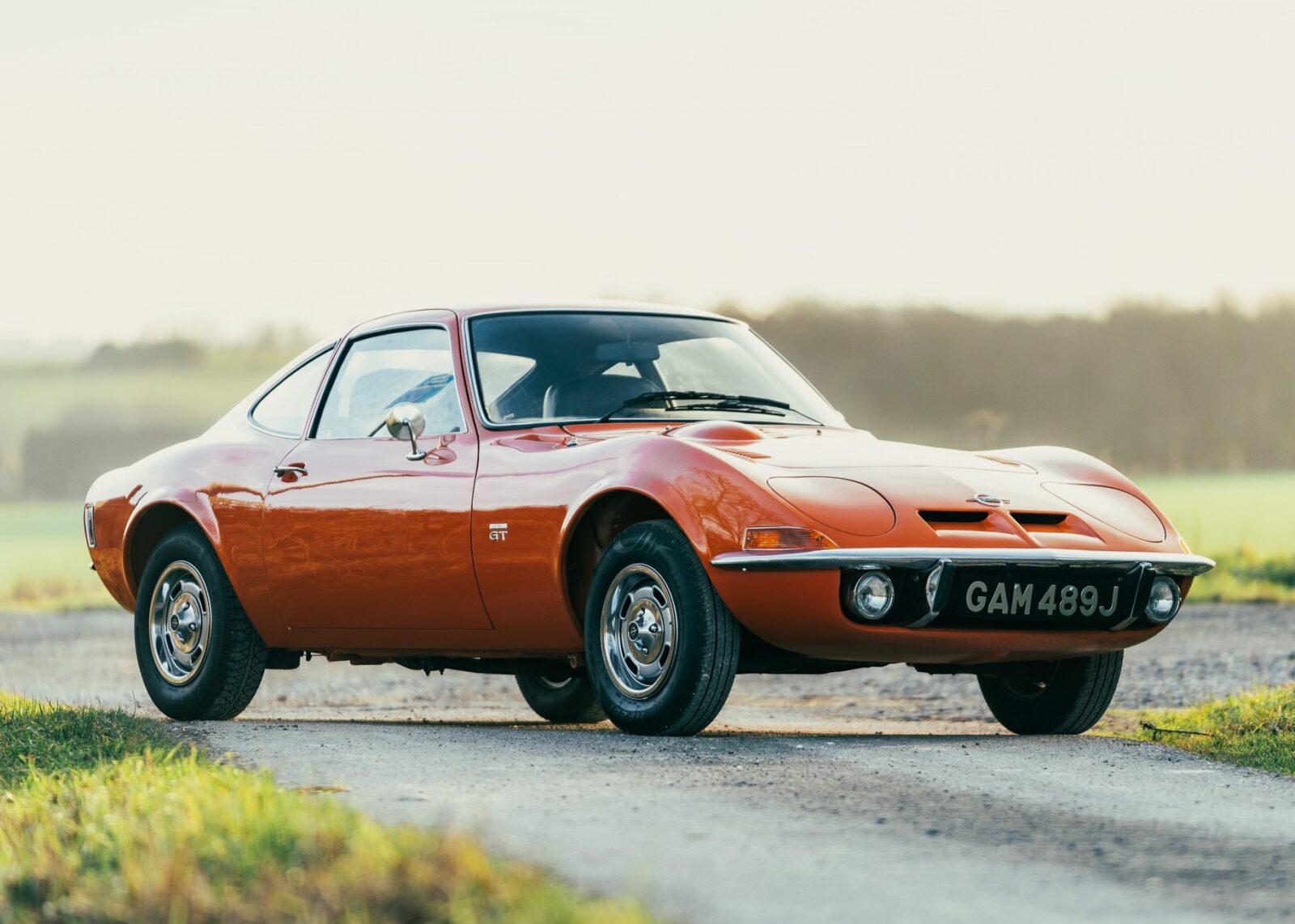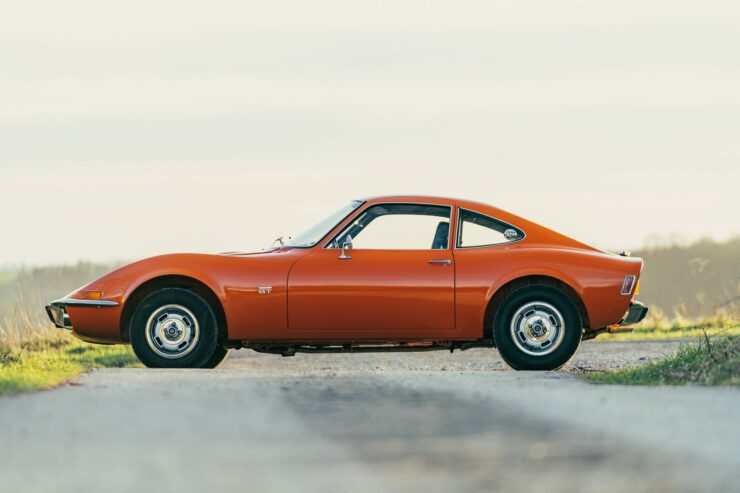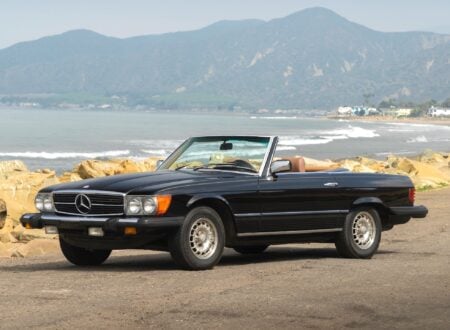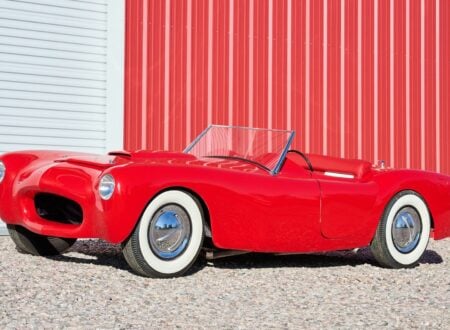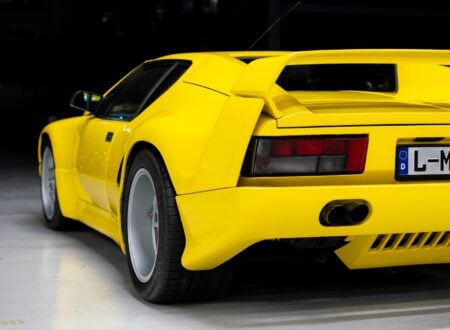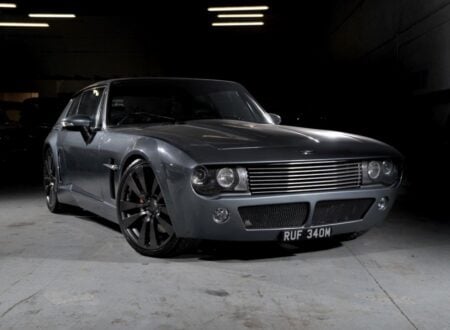The Opel GT was released in Europe in 1968 as the German automaker’s new halo model. The elegant design was immediately compared to the somewhat similar looking C3 Corvette. This resulted in some nicknaming it the “Baby Corvette.”
At the time of the Opel GT launch both Opel and Chevrolet were owned by General Motors, and it seems likely that both cars took influence from the 1965 Mako Shark II concept car designed by the great Larry Shinoda. Both the Opel GT and the C3 Corvette were released in 1968 on opposite sides of the Atlantic, and both had a resemblance to the Mako Shark II.
Fast Facts – The Opel GT
- The Opel GT was a two-seater sports car produced by the German automaker Opel between 1968 and 1973.
- The production version of the GT was based on the Opel Kadett platform and was powered by either a 1.1 liter or a 1.9 liter inline-four cylinder engine.
- The 1.1 liter engine produced 67 bhp at 6,000 rpm whereas the larger 1.9 liter engine was good for 102 bhp at 5,400 rpm. With a curb weight of just 845 kgs (1,863 lbs) to 940 kgs (2,072 lbs) depending on variant, the 1.9 liter engine was enough to ensure spritely performance.
- Over the course of the six year production run a total of 103,463 Opel GTs were built, the majority were powered by the 1.9 liter engine.
- Today the Opel GT remains highly collectible, there are owner’s clubs and online stores dedicated to the model, and regular meetups in various parts of the world.
Building The Opel GT
The success of cars like the Ford Mustang and Chevrolet Corvette in the United States had led some of the European-based American-owned automakers to look into developing their own versions, in the hopes of replicating their success.
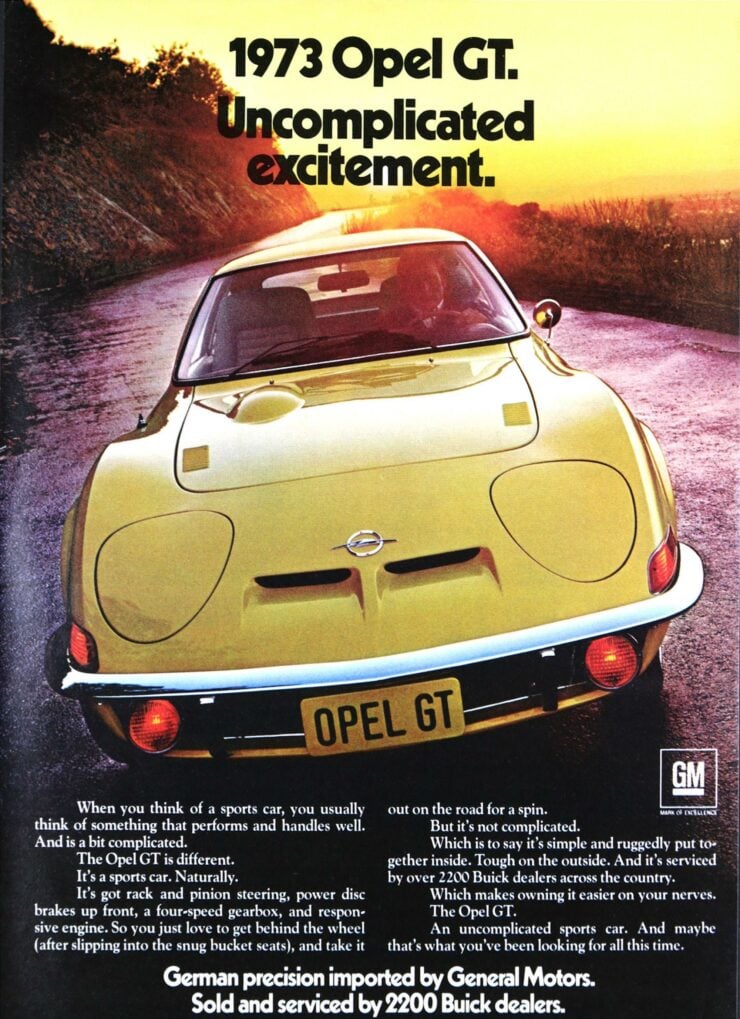

The two most famous examples of this phenomenon would be the Ford Capri and the Opel GT. Interestingly both of these cars would enter production in 1968 and both would bear a resemblance to their American cousins from across the sea.
In order to significantly reduce the development cost and timeline, the Opel GT was based on the pre-existing Opel Kadett B platform. A new body was designed by Erhard Schnell, with some influence from the 1965 Mako Shark II concept car of course, and the body manufacturing was contracted out to French company Brissonneau & Lotz.
Two primary versions of the Opel GT were offered – the less expensive 1.1 liter version and the more high-end 1.9 liter car. They produced 67 bhp at 6,000 rpm and 102 bhp at 5,400 rpm respectively.
Power was sent back through either a manual or automatic transmission to the rear wheels and thanks in no small part to their low curb weight of between 845 kgs (1,863 lbs) to 940 kgs (2,072 lbs) the Opel GT had good handling and performance by the standards of the era – particularly in 1.9 liter form.
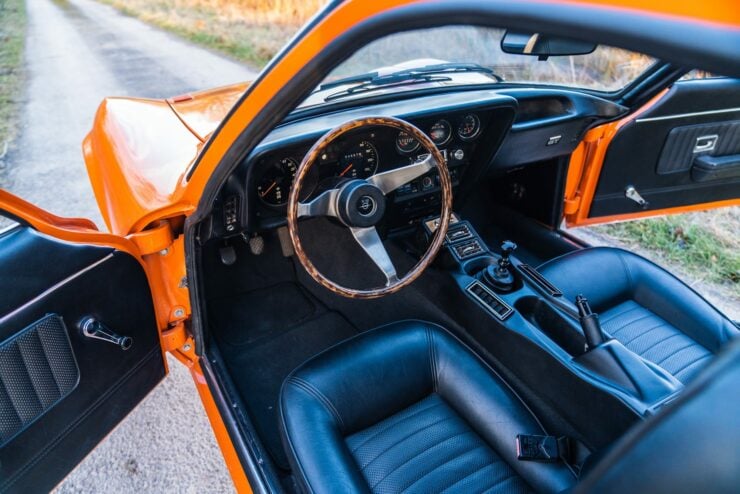

Many period reviews pitted the Opel GT against the Ford Capri, typically in 1.9 liter form for the Opel and 1.7 or 2.0 liter form for the Ford. Both cars were fairly evenly matched possibly due to the fact that under the skin they were reasonably similar, with independent front suspension, a live axle in the rear, with front disc brakes and rear drums, unibody construction, and a front engine-rear wheel drive layout.
Due in part to the 1973 Oil Crisis which made sports cars seem like an expensive and unnecessary luxury, and the fact that there was increasing competition from the likes of the Datsun 240Z et al the Opel GT was discontinued in 1973 after 103,463 had been built.
Today they remain highly collectible and offer an affordable option for classic car ownership for many – as they typically sell for reasonable sums and the maintenance and spare parts bills won’t break the bank.
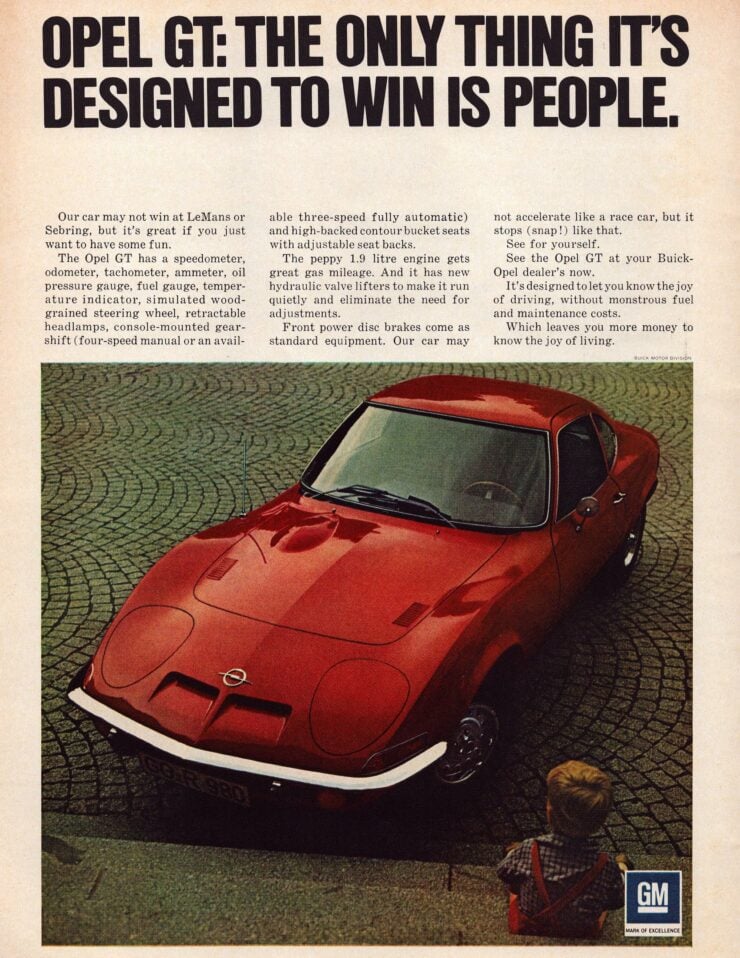

The Opel GT Specifications
- The Opel GT was based on the steel unibody Opel Kadett B platform. It has independent front suspension with upper A-arms and a lower transverse leaf spring, with a live axle on coil springs in the rear.
- Disc brakes were fitted up front with drums in the rear, while the brakes did have power assistance the steering did not.
- Power was provided by either a 1.1 liter engine or a 1.9 liter, both were inline fours though their designs were very different, with the larger engine featuring a camshaft in head design.
- The smaller engine was good for 67 bhp at 6,000 rpm and the larger engine made 102 bhp at 5,400 rpm, however these numbers would change somewhat over the production run due to increasingly stringent emissions restrictions.
- One of the most memorable features of the car are its unusual pop-up headlights. They’re manually controlled by a lever in the passenger compartment and rather than “popping up” in the traditional sense they both flip over about a longitudinal axis.
- Both 4-speed manual and 3-speed automatic transmissions were available for the Opel GT, some owners in later years have installed a 5-speed manual gearbox for better highway drivability.
The 1970 Opel GT Shown Here
The car you see here is a 1970 Opel GT, it’s fitted with the more desirable 1.9 liter engine and the owner has upgraded the transmission to a 5-speed unit.
Interestingly this was originally one of the US-market cars that were sold through Buick dealerships. It was imported into the UK 5 years ago and given a comprehensive mechanical overhaul.
The car is finished with a Rally Orange paintwork over a black leather-trimmed interior. It has the correct three-spoke wood-trimmed steering wheel, a Delco stereo, manually operated windows, and it has controls for an aftermarket air conditioning system (which would need to be reinstalled).
It’s now being offered for sale out of Oxfordshire in the United Kingdom with 54,567 miles on the odometer and you can visit the listing here on Collecting Cars if you’d like to read more or register to bid.
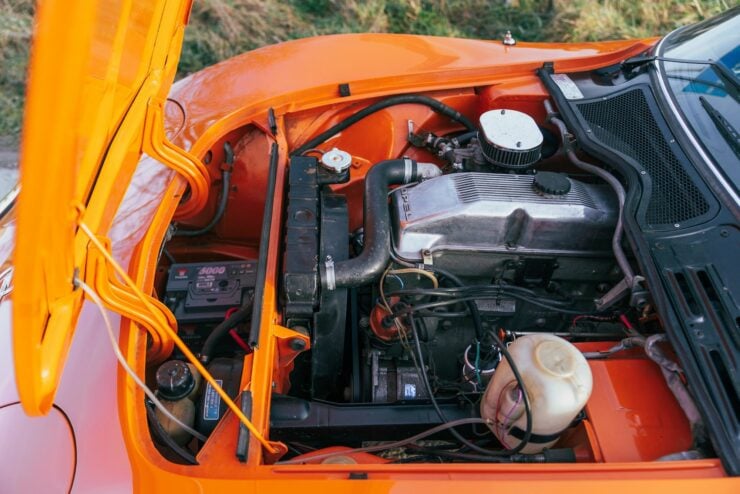
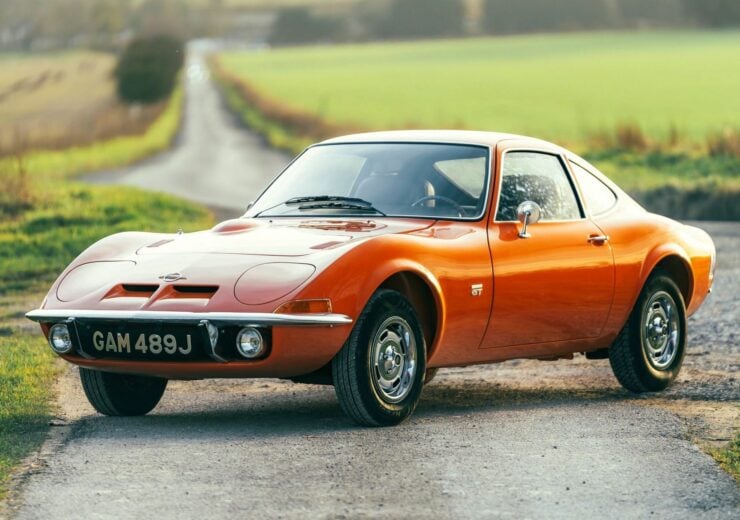
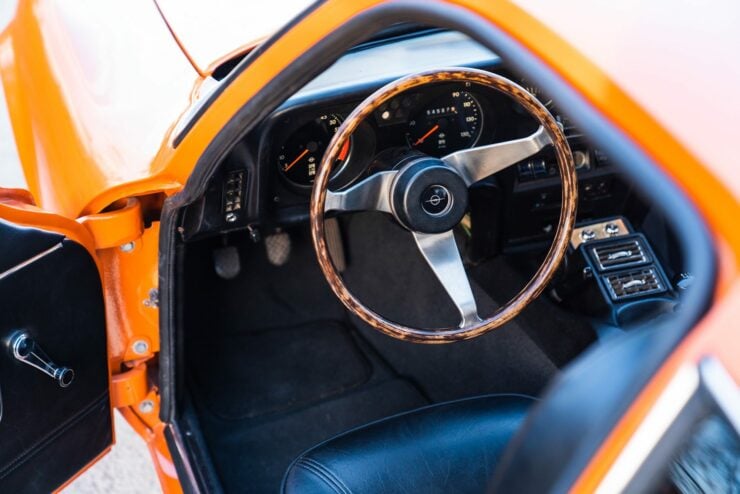
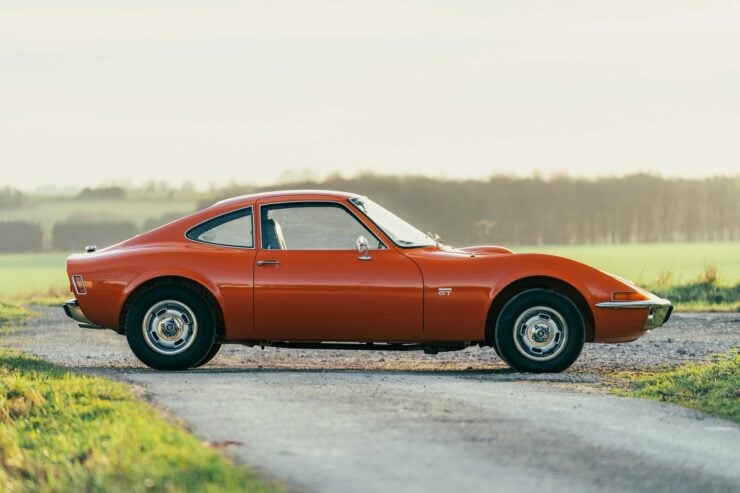
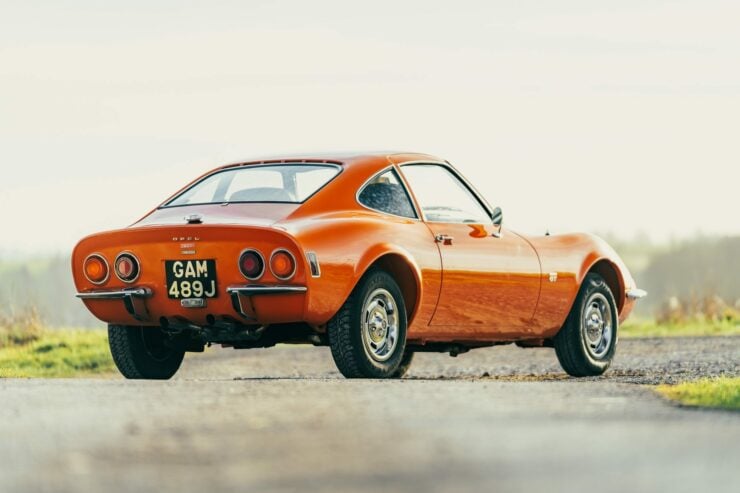

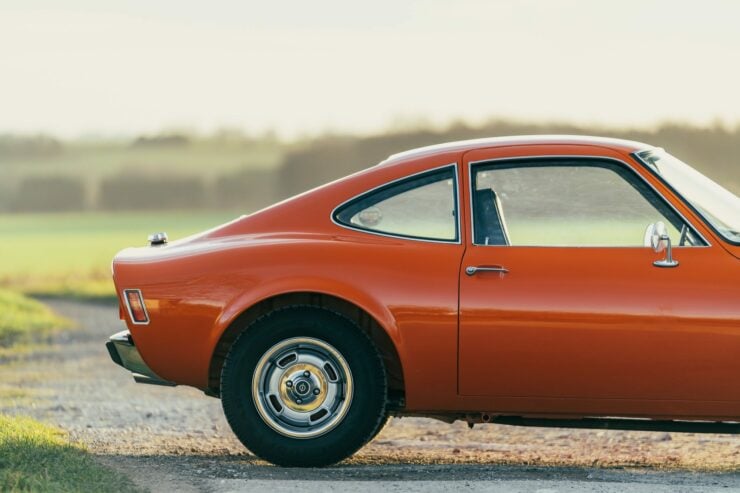

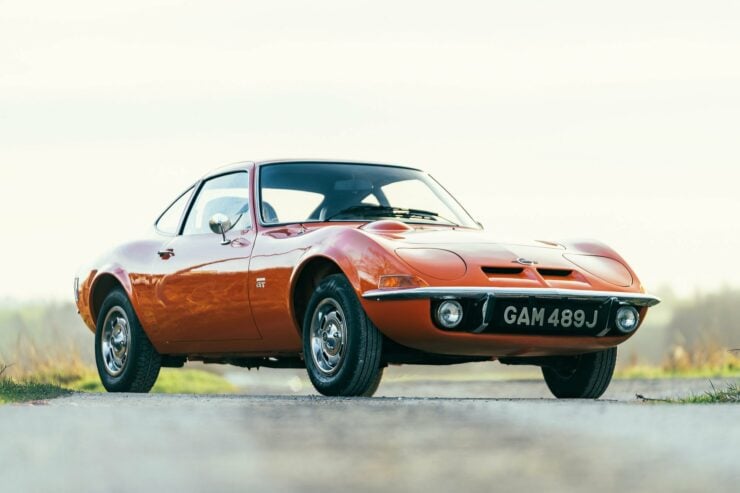
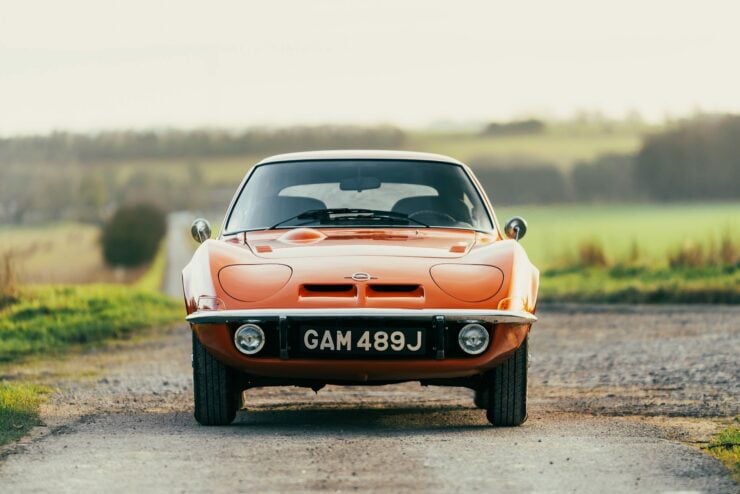
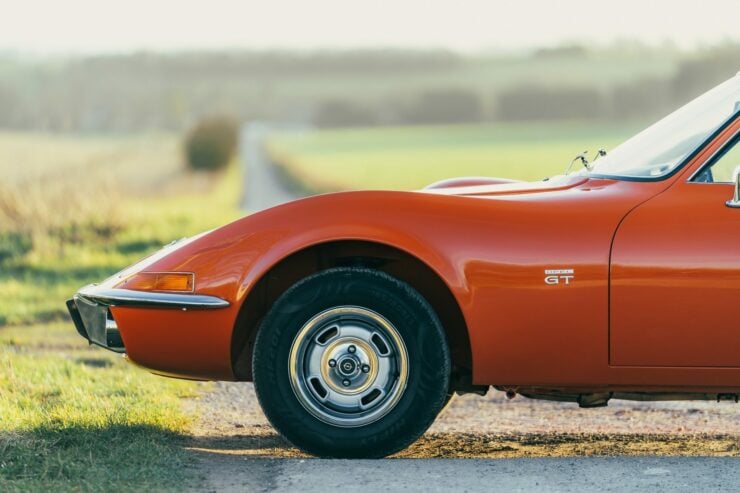
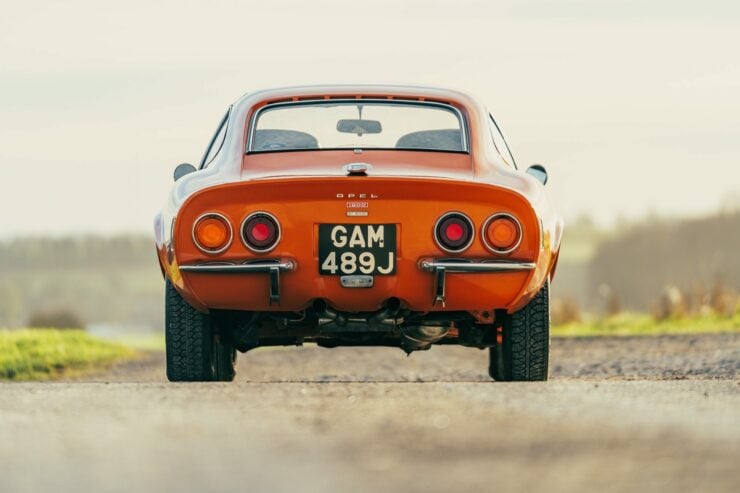
Images courtesy of Collecting Cars

